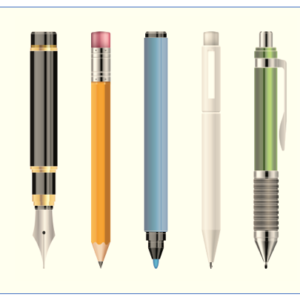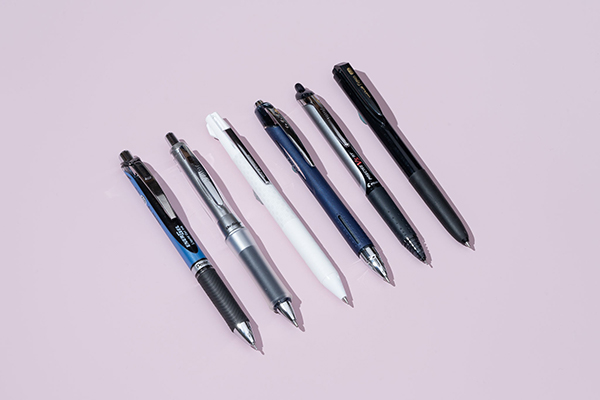A recent survey done byPPAI (Promotional Products Association International) on the use of pens found that 73% of people always carry a writing instrument with them. 83% use ballpoint pens on a daily basis.
Pens have been in use since ages by ancient Egyptians of 3000 BC. They used reeds to write on the papyrus. Centuries later, in 6th century AD, the quill pens came into existence. The quill pens were made from feathers and were used for almost 12 centuries.
In ancient India, pens made of feathers, wood and bamboo sticks were used to write our scriptures and texts.
“Did you know ?”
Indian God Ganesha wrote the great epic Mahabharata using a feather quill and later used his broken tusk to complete the writing of the epic.
The quill pens slowly got replaced by more durable metal point and metal nib pens.
In order to avoid repeatedly dipping the nibs in ink, a pen with a ink holder evolved – The fountain pen. Early Fountain pens were smudgy and blotted the paper. However in 1884 Lewis Edson Waterman developed and gained a patent for pen that wrote smoothly with continuity. Since then, Fountain pens have been a collectors delight and even today some of them are still sold at very high prices .
“Did you know ?”
Officially, the first Indian fountain pen was made by Ratnam Pen Works in 1932 . In 1935 Gandhiji received a swadeshi version of the pen.
The invention of ball point pen revolutionised the way of writing as it came with multiple advantages of being a writing tool that could write on different surfaces, altitudes and depths without any ink smudges. in 1943 , Lazlo Biro got the patent for the first ball point pen that wrote smoothly. That is when the first commercial pens – Biro pens became available. Since then the ball point pens have become the most popular instruments for writing due to its portability and ease of use.
“Did you know ?”
The largest ball point pen measures 5.5 m (18 ft 0.53 in) long and weighs 37.23 kg (82.08 lb 1.24 oz). Made by Acharya Makunuri Srinivasa (India) , this colossal pen was presented and measured in Hyderabad, India, on 24 April 2011.
Pens have survived the digital onslaught as writing is a very important fabric to our existence. Hand writing is the very essence of our education system where written content plays a key role in helping students understand, comprehend and articulate what they learn.
Writing down notes is a great way to help remember things. Writing also helps in organising our thoughts in a structured way reinforcing reading and language processing.
Writing with pen and paper helps to get rid of distractions of the digital world and promotes creative thinking . They also help in brainstorming new ideas and foster free flow thinking.
Last but not the least, writing is part of culture and has a very close link to the language and written script. The shapes and formats of the letters and scripts of every language is quintessential representation of the culture to which it belongs.
Significance of pens vary individually. For some, it may be used for just signing , for some it’s a means to help creative juices flow and for some a great gifting idea. For some it may be a status symbol as well especially the branded ones. Pens can be used for any occasions and are available in any budget.
Recently, it has been found that fountain pens are comparatively more eco friendly as they can be refilled and reused for longer period of times.
-
 PenProduct on sale₹1.00
PenProduct on sale₹1.00

